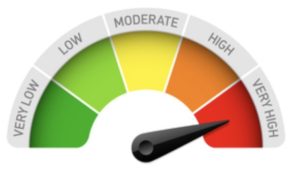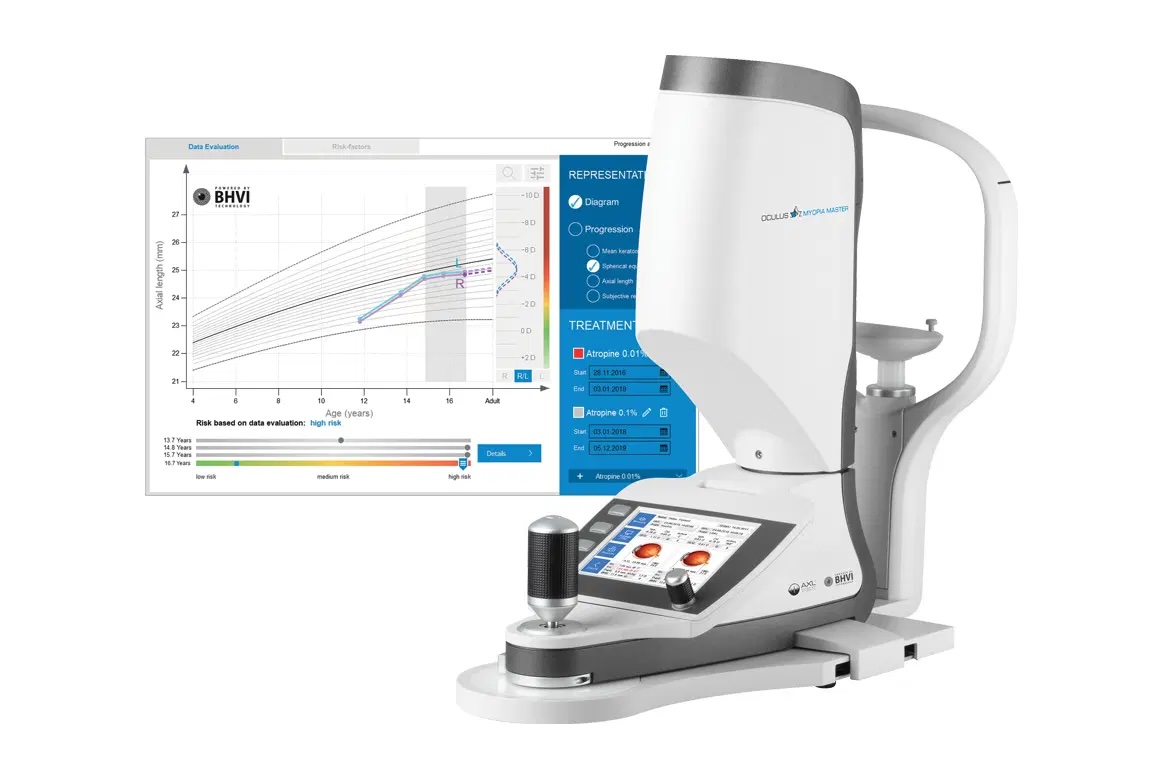Myopia Management For Kids
With our children spending more time in front of screens and less time outdoors, myopia is quickly becoming an epidemic.

Studies warn that 50% of the world’s population will be myopic by the year 2050. Thankfully, there are now treatments that slow the progression of myopia.
Our doctors are trained in myopia control using Ortho-K and MiSight specialty contact lenses or Atropine eye drops. Read on to learn more about myopia and how the doctors at Vision Source - Orland Park can help.

Myopia Care Risk Calculator
Myopia Risk Calculators
If one parent is myopic, there is a 25% chance that a child will develop myopia as well. If both parents are myopic, that number jumps to 50%.
The following calculators can show your child’s potential risk for developing myopia:
What is Axial Length Measurement?
How does it affect your child’s eyes?
The axial length of the eye is the distance from the front of the cornea to the back of the retina. To measure the length of the eye, an instrument called a biometer is used. In our office, we use the OCULUS Myopia Master®.
Our OCULUS Myopia Master® measures axial length and creates growth charts, providing our doctors with insight into myopia progression and treatment effectiveness. This enables earlier detection of myopia risks and allows for customized treatment plans to your child’s needs.

Oculus Myopia Master® for Axial Length Assessment
FDA Approved Treatments for Myopia
Orthokeratology Nighttime Retainers
Ortho K can be thought of as vision’s equivalent of dental braces. Ortho K retainer lenses can be worn by children as young as 7-10 years of age.
Ortho K retainers are worn at night and gently reshape the surface of the cornea while sleeping. In the morning, the retainers are removed and eliminate the need for daytime glasses or contact lenses. This is ideal for active kids who are involved in sports and other activities. Ortho K retainers are worn nightly to maintain the effect.
Studies show that this method slowed myopia progression by an average of 40-60%. The safety and efficacy of Ortho K has been well documented:
MiSight Daytime Soft Lenses
Our doctors are certified to prescribe MiSight 1-Day contact lenses, which are now FDA approved for Myopia Control.
MiSight contact lenses are soft, dual-focus contact lenses worn during the day that limit the axial growth of the eye by focusing peripheral light in front of the retina. They have been clinically proven to slow the progression of myopia; carefully controlled 3, 5, and 7-year studies show that axial elongation has slowed an average of 59%.
MiSight lenses are part of our Brilliant Futures program. Click here for more information.
MiSight vs. Orthokeratology

Studies show that both Ortho K and MiSight can slow the rate of myopia progression in children by an average of 50% (compared to wearing single-vision lenses). As with any health treatment, there is individual variability in treatment outcomes — some patients may achieve better than expected results, and others less.
Ortho K and MiSight lenses are both excellent treatment options for children with myopia. Both reduce myopia progression by focusing peripheral light in front of the retina, rather than behind the retina as occurs with regular glasses. This is believed to reduce excess eye elongation. Both methods are more beneficial than wearing traditional single vision lenses. Reducing abnormal eye growth is the goal of myopia control treatment.
The option that is best for your child will depend on a number of factors: level of myopia and astigmatism, eye shape, pupil size, eye sensitivity, the child and parents’ motivation, personal hygiene, compliance, lifestyle, sporting activities, and ease of use. Click here for a full article at My Kids Vision.
Low-Dose Atropine Eye Drops
Some children with myopia may not meet the specific FDA criteria for the above methods or may be unable to wear contact lenses. In these cases, low-dose atropine therapy eye drops may be considered. Several studies show that these drops help to reduce the progression of myopia in children, especially when combined with Ortho-K lenses.
Outdoor Time
Studies have shown that children in rural areas develop less myopia compared to children in more populous areas. Near work and outdoor time seem to be contributing factors. Children should put down the digital devices and spend 1-2 hours daily outdoors. And don’t forget the U.V. protection for their eyes and skin!
Don’t hesitate – if you or your child are experiencing myopia-related symptoms, schedule an eye exam with our team of qualified optometrists at Vision Source - Orland Park today.
